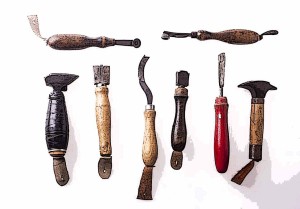Usually the person who creates a crafts work is the owner of the copyright. So, if you create a new jewelry item, you own the copyright. There is one exception: the “work made for hire” rule. Under this rule, the person who pays for a work to be created is the owner of copyright in two situations.
- The worker is an employee. Every copyrightable work created by an employee within the scope of his or her employment is automatically a work made for hire. The term “scope of employment” does not refer to whether the work was created during business hours or at home; it refers to whether the work is within the “scope” or range of activities expected from the employee. As one court stated, the question is whether it is the kind of work the employee was employed to perform. If a work is created by an employee within the scope of employment, there are no other requirements and no need for a written agreement—it is a work for hire. It is for this reason that, when sorting out ownership issues, courts first look at whether an employer-employee relationship exists as opposed to an independent contractor relationship.
- The worker is an independent contractor. For an independent contractor’s work to qualify as a work made for hire, three requirements must be met: (a) the work must be specially ordered or commissioned; (b) the work must fall within a group of specially enumerated categories (outlined below), and (c) a written agreement must be signed by both parties indicating it is a work made for hire (we provide a sample Work Made for Hire Agreement). It’s quite unusual for a crafts work created by an independent contractor to qualify as a work made for hire. That doesn’t mean the person paying for the work can’t acquire copyright ownership—there’s always an assignment.
IC (Not Employee) Work Made for Hire Categories
The work of an independent contractor (IC) will be a work made for hire only if it falls within one of several enumerated categories. Most work-made-for-hire categories are inapplicable to artists and listed below are those categories that may have some relation to crafts works:
- a contribution to a collective work—for example, creating a pewter chess set for a book featuring many chess sets
- a part of a motion picture or other audiovisual work—for example, creating a tapestry for the set of a television show
- a supplementary work—a work prepared for publication as a supplement to a work by another artist for the purpose of introducing, concluding, illustrating, explaining, revising, commenting upon or assisting in the use of the other work—for example, a publisher is producing a book featuring famous quilts and asks you to diagram a pattern for one of them, and
- an instructional text used in teaching—for example, a book demonstrating how to create crochet works, provided that it is designed for use in day-to-day teaching activity. If it is not intended as part of a regular teaching program, it will not qualify.
Any work created by an independent contractor that does not fall within one of the above categories cannot be a work made for hire. (As you can see, most crafts work will not qualify.) This is so even if the parties have signed a written agreement stating that the work is a work made for hire. For example, a fiber artist is commissioned to create a work for a school auditorium. The artist signs an agreement entitled “Work Made For Hire.” Even though an agreement was signed, the artist (not the school) owns the copyright in the fiber work because these textile and fiber works are not included among the enumerated categories of works by independent contractors that can be works made for hire.

